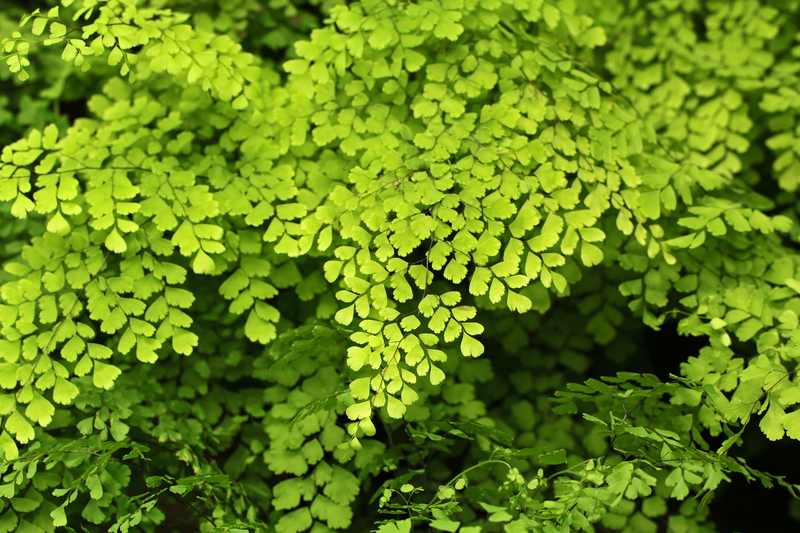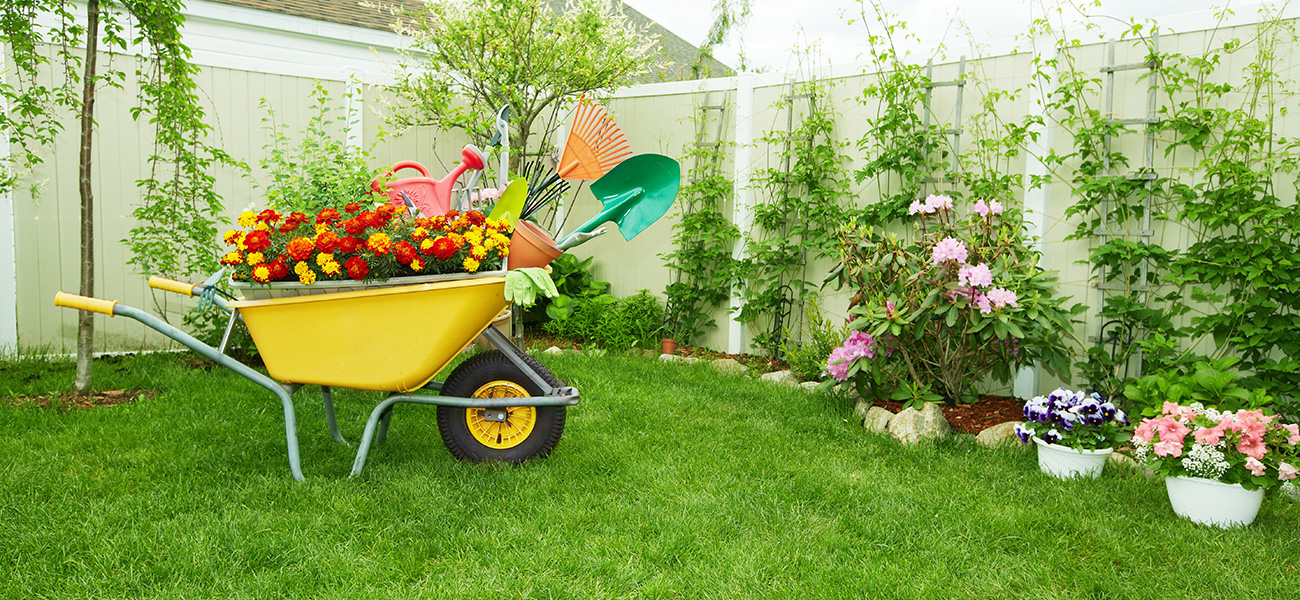Discover Artistic Hedge Trimming Shapes and Techniques
Posted on 01/07/2025
Discover Artistic Hedge Trimming Shapes and Techniques
Are you interested in adding a touch of creativity to your garden? Artistic hedge trimming is a rewarding activity that transforms ordinary shrubbery into living masterpieces. In this comprehensive guide, we delve into the mesmerizing world of hedge sculpting. From understanding essential techniques to learning about popular and unique shapes, you'll discover all you need to enhance your landscape with artistic flair.
What is Artistic Hedge Trimming?
Artistic hedge trimming, also known as topiary, is the horticultural practice of shaping trees and shrubs by meticulously cutting their foliage and twigs. This art form dates back to Roman times and has graced the gardens of grand palaces and humble homes alike. Whether you envision simple geometric forms or elaborate animal designs, creative hedge trimming breathes life and character into outdoor spaces.

Why Choose Artistic Hedge Trimming?
Before delving into hedge shaping techniques, it's important to understand the numerous advantages of incorporating artistic trim work into your garden:
- Boosts curb appeal: Unique hedge designs make a striking first impression.
- Personalization: Showcase your creative flair and style.
- Garden structure: Shapes can serve as functional dividers or focal points.
- Seasonal interest: Pruned shapes provide year-round interest, evergreen or otherwise.
- Wildlife shelter: Maintained shrubs offer habitats for birds and insects.
Best Plant Choices for Hedge Sculpting
Not all shrubs are created equal when it comes to artistic trim work. The most successful hedge topiary shapes rely on the right plant species. The ideal candidates are dense, have small or fine leaves, and respond well to pruning. Popular hedge plants for creative shaping include:
- Boxwood (Buxus): Widely favored for its compact growth and enduring greenery.
- Yew (Taxus): Versatile and resilient, perfect for intricate designs.
- Privet (Ligustrum): Fast-growing and excellent for larger shapes.
- Holly (Ilex): Glossy leaves and dense form make for stunning sculptures.
- Hornbeam (Carpinus): Holds shape well, even in winter.
- Lonicera nitida: A fine-leaved honeysuckle well-suited for smaller designs.
Essential Tools for Artistic Hedge Trimming
To achieve beautiful and precise results, quality tools matter. Equip yourself with:
- Hedge shears: For larger swathes, providing even cuts.
- Secateurs: Ideal for detailed, small-scale pruning.
- Topiary frames: Wire frames guide beginners or complex shapes.
- String and stakes: Mark guidelines for straight edges and symmetry.
- Electric trimmers: For expeditious, uniform trimming.
- Safety equipment: Gloves and goggles protect against injury.
Popular Artistic Hedge Trimming Shapes
The design possibilities for shaped hedges are nearly endless. Here are the most beloved and achievable styles for gardeners at any skill level:
1. Geometric Shapes
- Balls and Spheres: Classic and versatile, these forms suit borders, pots, or stand-alone features. Achieve symmetry by working slowly and observing from different angles.
- Cubes and Rectangles: Perfect for formal gardens, these sharp-edged shapes offer striking contrast to softer planting beds.
- Pyramids and Cones: Eye-catching, especially when paired with other forms or as a row along pathways.
2. Animal Topiary
- Peacock, Rabbit, Elephant, and more: Animal designs enliven the garden. Beginners should start with simple silhouettes before advancing to intricate figures.
3. Spirals and Twists
- Begin with a columnar shrub, and gradually notch out spirals. These shapes create vertical interest and lead the eye through the garden.
4. Arches and Tunnels
- Linked or trained hedges can form inviting entrances, passageways, or living pergolas for an immersive garden experience.
5. Lettering and Abstract Art
- For a modern or personalized touch, try initials, messages, or freeform artistic patterns.
Step-by-Step Hedge Trimming Techniques
Whether you are refining a simple ball or crafting a detailed animal, mastering a few trimming techniques is key. Here's a step-by-step guide to help you perfect artistic hedge shapes:
Step 1: Select the Right Time
- Deciduous shrubs: Trim during late winter or early spring, before new growth.
- Evergreens: Early to mid-summer is best, avoiding frost risk or hot, dry spells.
Step 2: Prepare the Shrub
- Check for health issues or dead wood and remove damaged branches first.
- Ensure the plant is well watered and fed leading up to trimming for rapid recovery.
Step 3: Mark and Outline
- For geometric shapes, use string, canes, or a topiary frame to mark boundaries.
- Step back often to ensure the outline matches your intended shape.
Step 4: Start Trimming
- Use clean, sharp tools for precision and plant health.
- Begin with broad cuts, then refine the shape with smaller tools.
- Always trim slightly less than you think needed; you can adjust further as required.
- Work methodically around the shrub for symmetry.
Step 5: Finishing Touches
- Check for uneven spots or protruding branches.
- Smooth lines with careful, light trimming.
- Stand back and view from all sides, making adjustments for balance.
Advanced Techniques for Artistic Hedge Trimming
Ready to step up your hedge artistry? Professionals use the following advanced techniques to achieve breathtaking results:
Cloud Pruning
Inspired by Japanese niwaki, cloud pruning involves sculpting shrubs into a series of billowing, layered shapes that resemble clouds. This technique adds a touch of zen tranquility and is ideal for skilled hands seeking an organic, harmonious look.
Espalier
Although commonly used for fruit trees, espalier can also shape hedges into spectacular patterns against walls or fences. The result? Living murals in geometric or freeform lines.
Sculptural Forms
Move beyond classic spheres! Try creative forms such as chairs, hearts, or whimsical figures. Use carefully bent wire mesh frames as guides until you master freehand trimming.
Tips for Maintaining Artistic Hedge Shapes
- Regular Trimming: Light touch-ups every few weeks keep shapes crisp. Dense shrubs may need more frequent attention during the growing season.
- Feed and Water: Healthy, vigorous growth recovers faster and holds artistic forms better.
- Watch for Pests: Look for signs of disease or insect damage, intervening promptly as needed.
- Sharpen Tools: Clean, sharp blades leave neat cuts and reduce plant stress.
- Step Back Often: Frequently check your work for proportion, symmetry, and artistic flow.
How to Fix Mistakes in Hedge Sculpting
Everyone makes errors, especially when starting out with creative hedge trimming. Here's how to handle common problems:
- Uneven Edges: Use stakes and strings to re-establish straight lines. Trim lightly to correct.
- Bare Patches: Allow time for regrowth, avoid over-cutting adjacent foliage, and fertilize as needed.
- Over-trimmed Shapes: Resist the urge to cut further. Give the shrub time to recover and fill in before attempting further correction.
- Symmetry Issues: Always trim in gradual layers, switching sides often for immediate comparison.
Inspiration: Famous Examples of Artistic Hedge Trimming
Some gardens are world-renowned for their jaw-dropping hedge artistry. Be inspired by these iconic works:
- Levens Hall, England: Home to the oldest topiary garden, filled with fantastical old yews and boxwoods shaped for over 300 years.
- Chateau de Villandry, France: Renowned for intricate parterre designs and love-knot hedges.
- Longwood Gardens, USA: A living showcase featuring geometric and spiral designs on a massive scale.
- Niwaki Gardens, Japan: Masters of cloud pruning, these spaces evoke harmony and the beauty of natural forms.
- The Topiary Park, Columbus, Ohio: An entire park mimicking a classic painting--living proof of horticulture's artistic power!
Artistic Hedge Design Ideas for Your Garden
Wondering where to start with your hedge sculpting project? Here are some fun and feasible ideas:
- Welcome Hedge: Trim the front hedge into your initial or house number for a unique touch.
- Animal Shapes for Kids: Let younger family members pick their favorite creature for the garden border.
- Themed Patterns: Create waves, zigzags, or hearts for seasonal interest or celebrations.
- Maze or Labyrinth: Carve garden walkways between sculpted hedge walls for playfulness and mystery.
- Living Fence: Alternate between tall columns and domes for privacy and visual intrigue.

Frequently Asked Questions About Artistic Hedge Trimming
- Is topiary suitable for small gardens?
Yes! Many designs, such as balls or cubes, can be adapted for pots and containers on patios or balconies. - How long does it take to grow a hedge for topiary?
This depends on the species. Fast-growers like privet may be ready in 2-3 years, while boxwood can take several years longer for full maturity. - Can I shape existing hedges or do I need to start young plants?
Mature hedges can be reshaped, though they may have limitations if overgrown or sparse. Regular pruning, feeding, and patience will help achieve your goals. - What are the best months for hedge sculpting?
Most shrubs should be trimmed in late winter or early spring, while evergreens prefer summer trimming. Avoid severe cutting in extreme heat or frost. - Is topiary high-maintenance?
It requires some dedication, especially during the growing season, but routine light trims are often more manageable than infrequent heavy cuts.
Conclusion: Transform Your Landscape with Artistic Hedge Trimming
Artistic hedge trimming is more than gardening--it's living sculpture. By mastering creative shapes and employing the right techniques, you can turn everyday shrubs into show-stopping features. Whether aiming for stately geometric forms, whimsical animals, or abstract designs, hedge sculpting offers an outlet for personal expression and a pathway to garden excellence. Remember to start with simple shapes, use the best plants and tools, and maintain your designs regularly. Let your imagination blossom--with patience and practice, your garden will soon showcase its unique, living works of art!
Ready to get started? Sharpen those shears and begin your journey into the world of artistic hedge trimming shapes and techniques--where the only limit is your creativity.



